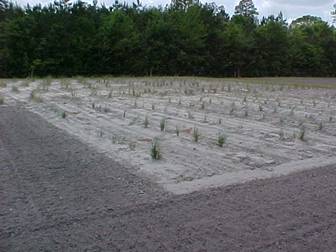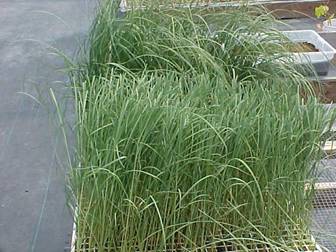Dune & Estuary Plant Production-2004 Report
go.ncsu.edu/readext?441606
en Español / em Português
El inglés es el idioma de control de esta página. En la medida en que haya algún conflicto entre la traducción al inglés y la traducción, el inglés prevalece.
Al hacer clic en el enlace de traducción se activa un servicio de traducción gratuito para convertir la página al español. Al igual que con cualquier traducción por Internet, la conversión no es sensible al contexto y puede que no traduzca el texto en su significado original. NC State Extension no garantiza la exactitud del texto traducido. Por favor, tenga en cuenta que algunas aplicaciones y/o servicios pueden no funcionar como se espera cuando se traducen.
Português
Inglês é o idioma de controle desta página. Na medida que haja algum conflito entre o texto original em Inglês e a tradução, o Inglês prevalece.
Ao clicar no link de tradução, um serviço gratuito de tradução será ativado para converter a página para o Português. Como em qualquer tradução pela internet, a conversão não é sensivel ao contexto e pode não ocorrer a tradução para o significado orginal. O serviço de Extensão da Carolina do Norte (NC State Extension) não garante a exatidão do texto traduzido. Por favor, observe que algumas funções ou serviços podem não funcionar como esperado após a tradução.
English
English is the controlling language of this page. To the extent there is any conflict between the English text and the translation, English controls.
Clicking on the translation link activates a free translation service to convert the page to Spanish. As with any Internet translation, the conversion is not context-sensitive and may not translate the text to its original meaning. NC State Extension does not guarantee the accuracy of the translated text. Please note that some applications and/or services may not function as expected when translated.
Collapse ▲This is a 2004 report from a NC Specialty Crops Program Project. It is posted for historical reference purposes.
ROJECT LEADER(S): David L. Nash
LOCATION: Field research on sea oats and American beachgrass was conducted at the Castle Hayne Research Station. Greenhouse research on sea oats, bitter panicum, seabeach amaranth, saltmeadow cordgrass, smooth cordgrass, and giant cordgrass was conducted at the Town of Oak Island greenhouse. Field (on-farm) trials were located at Wrightsville Beach, Oak Island, and Ft. Fisher. An estuary plant on-farm trial with a Brunswick County sea oats grower was conducted at his greenhouse.
IMPACT
The demand for sea oats and other dune plants was exceptionally strong in 2004. Growers reported good sales of sea oats and other dune plant species. The research and extension education resulting from these projects provided growers with improved production methods. Fertility and disease management in the greenhouse continues to be areas of concern with growers. One on one consultations provided growers with knowledge to manage these problems resulting in improved plants with less use of both fertilizer and fungicides. A dune plant production meeting will be conducted in 2005 where growers will learn improved production methods that were gained through the greenhouse and field research studies.
INTRODUCTION
The demand for native, indigenous plants for conservation of the coastal dune system in North Carolina continues to increase. Dune plants are needed in large quantities for beach renourishment projects and to revegetate dunes following storm events. The impacts of hurricane Isabel along beaches in the northern part of the state generated a large demand for native dune plants in 2004 to stabilize and build coastal dunes. Nearly every coastal community in NC is currently seeking, or is already participating in, federally sponsored beach renourishment projects. Work by this agent previously funded by the Specialty Crops Program has resulted in new dune plant suppliers in North Carolina and has greatly reduced the amount of non-indigenous dune plants brought in from Florida and other dune plant producing states. The work with sea oats has been very successful and the research in progress needs to be continued. Production and marketing of other dune species needs to be investigated. The research on production of coastal estuary species that was initiated in 2003 was continued in 2004. More work needs to be done and shared with potential growers in NC. Future growers for dune and estuary plants include farmers with existing float-system greenhouses as well as coastal municipalities. Current research is underway with test plots at Wrightsville Beach, Oak Island, Ft. Fisher and the Castle Hayne Research Station. Participants include North Carolina State University, Louisiana State University, coastal municipalities, growers and North Carolina Cooperative Extension.
Dune plant growers greatly benefit from the educational programs for coastal municipalities and property owners. By educating the end users of the plants produced by the growers, the demand for the plant material increases. Programs for end users of the plants include:
| Dune Conservation Program | Town of Southern Shores, NC |
| Dune Ecology Program | Bald Head Island Beach Committee |
| Dune Conservation Program | Oak Island Lion’s Club |
| Dune Conservation Program | Shallotte Presbyterian Men’s Group |
| Growing Dune Plants Program | Oak Island 4H Club |
| Greenhouse Production of Dune Plants Program | Brunswick Community College horticulture class |
| Dune Conservation Program | Town of Duck, NC |
| Dune Conservation Program | Town of Caswell Beach, NC |
| Dune Conservation Field Trip Program | Bradley Creek Elementary School, Wilmington, NC |
| Dune Conservation Field Trip Program | Rachel Freeman Elementary School, Wilmington,NC |
| Dune Planting and Education Program/Project | Town of Oak Island volunteers |
| Dune Planting and Education Program/Project | students and teachers Lee Christian School |
| Dune Planting and Education Program/Project | Wrightsville Beach Elementary School, Wrightsville Beach, NC |
| Dune Ecology and Conservation Program | Brunswick Middle School, Southport, NC |
| Dune Planting Project | Oak Island 4H Club |
| Leader Training Program on sea oats planting | employees and volunteers at the NC Aquarium at Ft. Fisher |
| Dune Ecology Field Trip Program | New Hanover County 4H Environmental Camp |
| Dune Ecology Field Trip Program | Onslow County 4H Environmental Camp |
| Leader Training Program on sea oats planting | employees of the Town of Carolina Beach |
| Sea Oats Seed Harvest for Seedling Production Training | Town of Oak Island Volunteers |
| Estuary Plant Production and Seed Harvest Training | NC Coastal Federation employees |
| Dune Ecology Program | Virgo Middle School, Wilmington, NC |
| Dune Conservation Program | Bald Head Island Conservancy |
| Dune Ecology Field Trip Program | Wrightsville Beach Elementary School, Wrightsville Beach, NC |
By networking with the NC Coastal Federation, NC Sea Grant, public schools, coastal municipalities and other coastal groups, the impacts of the dune conservation and revegetation programs were mulitiplied. Marketing information focused on production of needed species and education of coastal property owners and managers. Individual contacts and consultations with growers, working with coastal municipalities, and public education programs were the primary methods used to educate clients.
METHODS
Field research to select for improved traits from more than 50 accessions of sea oats was continued. This was the second year of selections. These were transplanted to another field for further examination with selections to be made for increase in 2005. This research is being duplicated with field trials on the gulf coast by researchers at LSU. A selection of American beachgrass was increased in 2004 and further increased in January 2005. It may be possible to release a new named variety of American beachgrass as early as 2007. Replicated trials were conducted in the greenhouse to improve disease control, fertilization, and size management. Fertilization and clipping trials were conducted at Ft. Fisher and Oak Island respectively.
RESULTS
Work in 2004 focused on continuing the research already underway. Selection of best-adapted indigenous sea oats will continued to be a high priority. Current field research also hopes to yield sea oats that will produce seeds in an agronomic setting thus reducing the need to harvest from coastal dunes. Field production of seeds may offer another potential crop for NC growers. Work with dune plants including sea oats, seashore elder, seabeach amaranth, and other species resulted in improved production protocols and marketing. Estuary plant species were investigated and production methods researched. Currently this agent is assigned to Brunswick, New Hanover, Pender, Onslow and Carteret Counties. This wide area of responsibility allowed for greater opportunities to network with both growers and users of dune and estuary plants.
CONCLUSION
The past research and coastal management education efforts involving dune and estuary plants has yielded substantial results. Funding of this project by the North Carolina Specialty Crops Program enabled this agent to provide growers, dune plant installers, coastal municipalities and others with the knowledge and skills needed to protect and conserve the North Carolina coast while providing alternative income opportunities for those involved in businesses associated with these efforts.
TABLES & PHOTOS
Posted by Jeanine Davis, NC Alternative Crops & Organics Program, Department of Horticultural Science, NC State University. Reviewed 7/16/2022.





